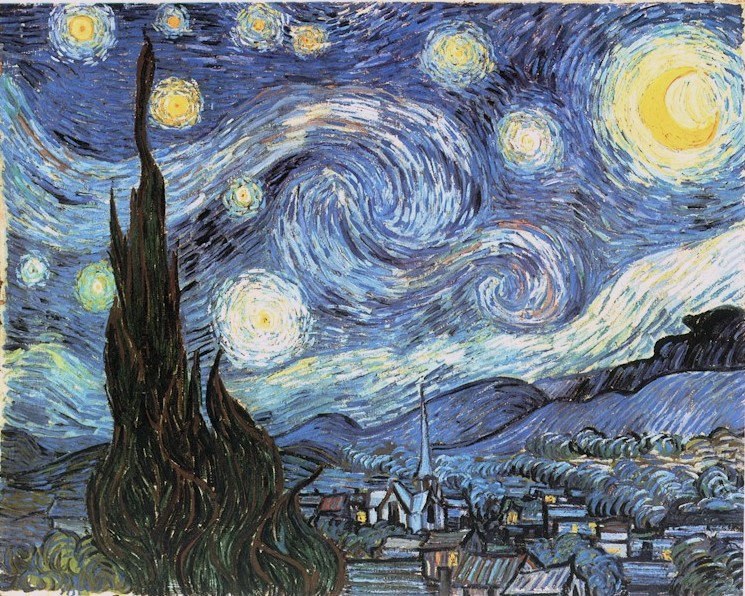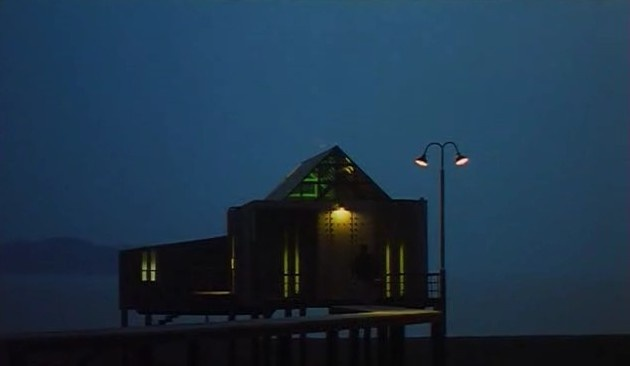Vincent Van Gogh - 1889 The Starry Night(별이 빛나는 밤)
Paintings/Works 2012. 10. 29. 15:13 |
Oil on canvas
73.0 x 92.0 cm.
Saint-Rémy: June, 1889
F 612, JH 1731
New York: The Museum of Modern Art
Starry Night is probably Vincent van Gogh's most famous painting. Instantly recognizable because of its unique style, this work has been the subject of poetry, fiction, CD-ROMs as well as the well known song "Vincent" or "Starry, Starry Night" by Don McLean.
While there's no denying the popularity of Starry Night, it's also interesting to note that there is very little known about Vincent's own feelings toward his work. This is mainly due to the fact that he only mentions it in his letters to Theo twice (Letters 595 and 607), and then only in passing. In his correspondence with his brother, Vincent would often discuss specific works in great detail, but not so in the case of Starry Night. Why? It's difficult to say.
Starry Night was painted while Vincent was in the asylum at Saint-Rémy and his behaviour was very erratic at the time, due to the severity of his attacks. Unlike most of Van Gogh's works, Starry Night was painted from memory and not outdoors as was Vincent's preference. This may, in part, explain why the emotional impact of the work is so much more powerful than many of Van Gogh's other works from the same period.
Some people have made stylistic comparisons to Vincent's other well known and equally turbulent work Wheatfield with Crows. Does the tumultuous style of these works reflect a tortured mind? Or is there something more we can read within the whorls Vincent's raging night sky? This is what makes Starry Night not only Vincent's most famous work, but also one of its most frequently interpreted in terms of its meaning and importance.
Some people have speculated about the eleven stars in the painting. While it's true that Vincent didn't have the same religious fervour in 1889, when he painted the work, as he did in his earlier years, there is a possibility that the story of Joseph in the Old Testament may have had an influence on the composition of the work.
'Look, I have had another dream' he said, 'I thought I saw the sun, the moon and eleven stars, bowing to me.' Genesis 37:9
Whatever the interpretations or underlying meanings, Starry Night stands out as one of the most important works of art produced in the nineteenth century.
뉴욕 현대미술관 관련출판물에서의 설명
The Museum of Modern Art, MoMA Highlights, New York: The Museum of Modern Art, revised 2004, originally published 1999, p. 35
Van Gogh's night sky is a field of roiling energy. Below the exploding stars, the village is a place of quiet order. Connecting earth and sky is the flamelike cypress, a tree traditionally associated with graveyards and mourning. But death was not ominous for van Gogh. "Looking at the stars always makes me dream," he said, "Why, I ask myself, shouldn't the shining dots of the sky be as accessible as the black dots on the map of France? Just as we take the train to get to Tarascon or Rouen, we take death to reach a star."
The artist wrote of his experience to his brother Theo: "This morning I saw the country from my window a long time before sunrise, with nothing but the morning star, which looked very big." This morning star, or Venus, may be the large white star just left of center in The Starry Night. The hamlet, on the other hand, is invented, and the church spire evokes van Gogh's native land, the Netherlands. The painting, like its daytime companion, The Olive Trees, is rooted in imagination and memory. Leaving behind the Impressionist doctrine of truth to nature in favor of restless feeling and intense color, as in this highly charged picture, van Gogh made his work a touchstone for all subsequent Expressionist painting.
'Paintings > Works' 카테고리의 다른 글
| Leonardo Da Vinci - 1503, Monna Lisa(모나리자) (0) | 2011.04.27 |
|---|


